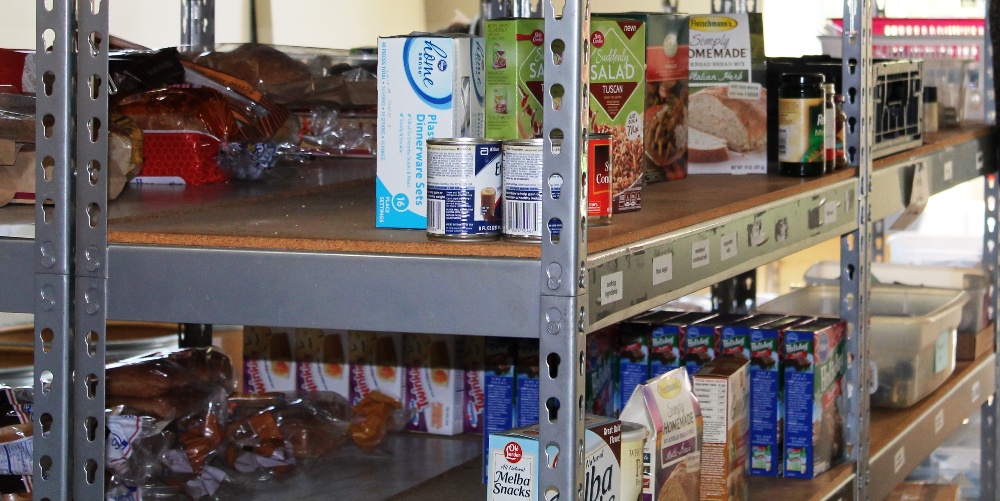Say hello! We’d love to hear from you.
© 2024 Copyright – Small Giants Community. All Rights Reserved

For nearly three months now, office buildings across the country have sat vacant, while its former occupants adjust to working from makeshift home offices and scramble to learn video call etiquette.
For those who have long called for remote work to go mainstream, it’s an imperfect experiment: employers lacked time to make proper plans, parents are managing restless, isolated children, and we’re all struggling with the mental toll of our country’s health, economic, and racial crises.
Although the circumstances are extraordinary, this experience is prompting many to reconsider their stance on virtual work. In the short-term, working from home offers continued safety to team members who aren’t confident about returning to the office. But in the long term, what can we learn from this experience to create a more flexible, rewarding work experience for our team members?
We talked to Valerie Webster, Chief Strategy Officer at The Motz Group, to hear her perspective on returning to the office, the future of working from home, and how to keep employees engaged right now.
Here’s how leaders are Stepping Up the way teams work.
As the economy reopens and stay-at-home orders are relaxed, leaders are facing tough decisions about when and how to return to the office. Is it time to start transitioning your team back to the office? Should you play it safe and wait it out at home? And do your team members even want to go back to in-person work?
Your approach depends on the kind of business you do and the unique needs of your team members. Here’s one perspective on how to calculate your next move.
When The Motz Group transitioned its non-essential team members to virtual work, they were guided by one core objective: to take care of their people. They protected all jobs, set everyone up with the technology they needed, and gave everyone the option to take a week off to recalibrate and take care of themselves. It set the stage for the team to thrive while working from home, but now that the state of Ohio is reopening, it’s time to start thinking about offering an option to work from the office, too.
“There’s this overall question of what is reasonable and responsible,” says Webster. “Now through September 1st, our focus is on flexibility. We are opening up an option to go back into the office, under a set of clearly-communicated protocols. If you’d rather work from home, continue operating as such.”
For those who do want to return to the office, Motz created a website that clearly outlines the protocols they need to know in order to do so safely. They also appointed return-to-work captains to help support the transition and engage team members in the process. After the summer, the leadership team will revisit the plan and evaluate how it’s going.
“We recognize that everyone has unique challenges,” says Webster. “Confidence levels vary, and we want every team member to have the option to work wherever and however is best for them right now.”
Beyond working from home to keep team members healthy and safe, many leaders have been inspired to reimagine the way their teams work long term. For companies that went into this crisis with strong cultures and high engagement, they’re finding that their cultures are resilient enough to not just survive this test, but to thrive during it.
It’s prompting purpose-driven leaders to imagine what else is possible for their organizations — what can we take from this experience to improve our cultures and serve our team members in new ways?

For Webster, this experience led to a lightbulb moment about the possibility of a more flexible, progressive workplace culture. Despite being forced to work from home with short notice, Motz’s culture of high trust, performance, and integrity shone through.
“This prompted us to totally reimagine the future of how we work,” says Webster. “How can we be more progressive? How can we differentiate ourselves? We trust our people, and we want them to enjoy life and have a flexible lifestyle. Now that we have them set up to work from anywhere, are we open and progressive enough to make this permanent?”
It’s an exciting notion for Webster and their leadership team, because it’s a new way for them to take care of team members in the totality of their lives. It speaks to a larger conversation about working from anywhere (WFA) and giving team members the flexibility to work where they want on any given day — whether that’s the office, their home, a coffee shop or the beach.
This experience has also given many leaders a rare glimpse into the home lives of their team members. The Motz Group has a young population, and many team members have children at home. Despite the difficulties of having their kids out of school, many team members shared how much they loved spending more time together.
Working from anywhere would give parents more ownership over how they spend their time — whether it’s more time with them in the morning without a commute, sharing meals together, or the option of picking their kids up from school.
At this point, the shock of the pandemic has worn off for many, and we’re settled into our new normal. Many leaders are sorely missing the engagement opportunities that summertime usually offers: offsite retreats, summer picnics, and community service events are all postponed until further notice.
It takes some creativity, but there are plenty of fun, thoughtful ways to boost employee engagement while teams work from home.

The Motz Group practices open-book management through the Great Game of Business, and Webster views it as their greatest engagement opportunity.
“60 percent of our team participates in our virtual huddles,” says Webster. “It’s open to everyone, but some can’t always come because they’re working in the field. It’s a great way for us to generate energy and connectivity. Our team has gone above and beyond to take ownership throughout this.”
Around this time of year, their team is usually engaged in an off-site, organization-wide community service event that spans two days and ends with a celebration of employees alongside their spouses. Instead, they took the funds set aside for this year’s event and partnered with Inter Parish Ministries to help feed the local community.
“It’s important that we stay engaged and make an impact downstream,” says Webster. “We were able to protect our jobs, how else can we help people? We’ve already fed 1,000 people in 3 weeks. We are including handwritten notes with the food packages to spread kindness to those receiving it.”
There’s no one way to approach this next phase, but purpose-driven leaders are committed to listening to their people and making decisions that serve their team and the culture. Virtual work is likely to play a larger role in all of our lives for the long term, but purpose-driven leaders know it’s not so much about where you’re working or even how — it’s why.
These leaders are part of Small Giants companies — companies that prioritize their purpose and culture and invest in their emerging leaders.
One way Small Giants companies invest in their next generation of leaders is by enrolling them in the Small Giants Leadership Academy. This robust one-year certification program consists of virtual learning sessions with expert leaders and coaches, an extensive resource library, on-the-ground meetups with your cohort, a leadership assessment, and your event ticket to two Small Giants gatherings.
© 2024 Copyright – Small Giants Community. All Rights Reserved
Small Giants Community Program Director
Virtual Position
The Small Giants Community is hiring! Are you looking for a job where you get to work remotely with a hard-working, tight-knit team? Do you like talking about values-based businesses, inspiring leadership stories, and Ted Lasso? Boy, do we have the job for you!
We’re a high-performing team working hard to grow the Small Giants Community, an organization committed to identifying, connecting, and developing purpose-driven business leaders. Our network spans more than 6,000 leaders, 300 companies, and 28,000 employees who are growing with intention, and we believe that more and more people are beginning to see the value in purpose-driven business.
Basically, we’re a small but mighty team. We’re energized by coffee, the sun and leaders doing great things in the world via their companies. We’re looking for someone to add value to our team with their own unique skills, motivations, and experience. This person has to be flexible and able to manage their own workload deftly while also being incredibly team-oriented.
Position Overview:
We are seeking a highly motivated individual to join the Small Giants Community as a Full-Time Program Director. In this role, in collaboration with the executive director, you will be responsible for overseeing and managing various programs including the Summit, Leadership Academy, Sounding Board, content development, and our marketing efforts. You’ll also be responsible for cultivating relationships and managing a team. You will play a vital role in shaping and driving the organization’s mission to foster values-driven leadership and promote a community of purpose-driven businesses.
Responsibilities:
Key Qualifications:
Benefits & Perks:
About the Small Giants Community team:
Our Purpose
To identify, connect, and develop purpose-driven business leaders.
Our Core Values
Trust Each Other: We understand that the team will thrive when we fully trust one another and assume the best intentions, support one another, and work toward a common goal.
Grow with Purpose: We continuously invest in our learning and development, seeking new opportunities to grow our skills and strengthen our weaknesses so that we can better serve the Community.
Work Mindfully: We prioritize meaningful, quality work over everything. We’re committed to being present with the current objective and giving it our full attention, providing the best possible opportunities and resources to our Community.
Create Great Experiences: We are committed to doing things differently. We understand that the Small Giants difference is high-class, personal and meaningful experiences that result in lifelong learning and lasting relationships.
Be Responsive: We believe in meeting and exceeding the promises we make. In working with each other and with customers, we are responsive and accountable.
Sounds like an interesting opportunity and/or want to learn more? Email your resume and cover letter to hamsa@smallgiants.org.
Notifications
